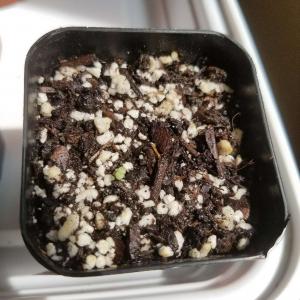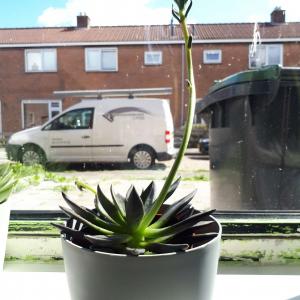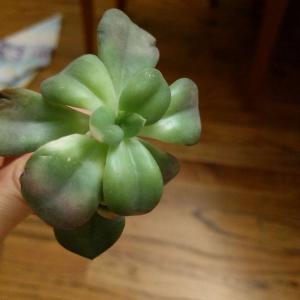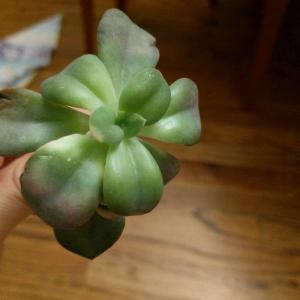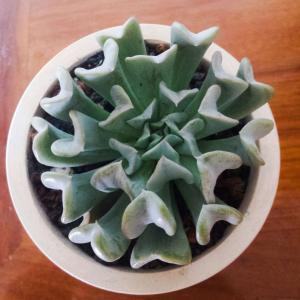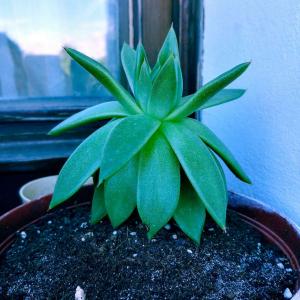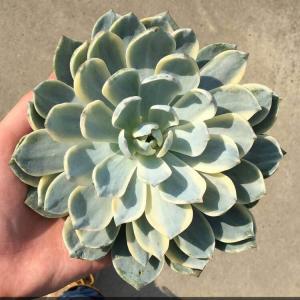成长记
Tessa van der Burght
2017年08月19日

I new added a "Echeveria Perle von Nürnberg" in my "garden"
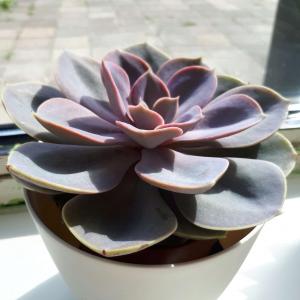

1
0
文章
Dummer. ゛☀
2017年08月17日

Succulent plants are easy to love. Their ease of care, sunny dispositions and moderate growth habits make them perfect for warm seasons outdoors or well lit interiors. The Echeveria succulent plant is just such a specimen, thriving on brief periods of neglect and low water and nutrients. Echeveria care is practically foolproof and grows well in either containers or toasty garden beds. The many varieties and colors of Echeveria plants provide wonderful tones and texture for mixed beds and pots.

Details on Echeveria Plants
Echeveria spp. stem from thick-leaved rosettes. The leaves are fleshy and have a waxy cuticle on the exterior. Often the leaves are colored and a firm touch can mar the skin and leave marks. The Echeveria succulent plant is slow growing and usually doesn’t exceed 12 inches in height or spread.
Native from Texas to Central America, the plants prefer desert conditions, but will tolerate periods of moisture as long as they are allowed to dry out before applying more water. Growing Echeveria in an unglazed clay pot, which will allow water to evaporate, is ideal. Otherwise, they need full sun and well drained soil. There are 150 cultivated varieties of the plants, one of which is probably right for you.

Growing Echeveria
These easy little succulents produce offsets or baby plants nestled against the mother rosette. These are easy to separate and grow. Just pull the little rosette away and replant in a cactus mixture or homemade blend of equal parts sand, topsoil and compost. You can also start new plants from leaf cuttings. Simply lay the leaf on the surface of the soil. It will root within a few weeks and soon a small rosette will grow next to the rooted leaf. The leaf will dry up and crumble off of the new plant.

Care Instructions for Echeveria
The most important part of good Echeveria care is watering. The biggest issue with the succulents is overwatering. Provide moderate amounts of water in the hot, dry season. Let the soil dry out completely before you irrigate again. Potted plants should not be left in a wet saucer. Soft rots and root rot issues occur when the plant is too wet. The only other issue of concern is the mealybug. Their feeding behavior can seriously minimize the plants vigor. Situate the plants in full sun and mulch around them with gravel or sand to help prevent weeds and conserve moisture. Protect the plants from freezing temperatures and store potted plants indoors in winter. The plants do not need pruning, but you may pinch off damaged or errant growth as needed.

How to Use Echeveria
The sheer variety of these plants and other succulents means they lend themselves well to group displays. Potted displays with several varieties or different types of succulents and cacti make attractive additions to the home interior or exterior. Mix and match colors and sizes for unique settings. Put the larger varieties in the center and the trailing or shorter types at the edges. Continue general care instructions for Echeveria, which will also work for most other types of succulents.

Details on Echeveria Plants
Echeveria spp. stem from thick-leaved rosettes. The leaves are fleshy and have a waxy cuticle on the exterior. Often the leaves are colored and a firm touch can mar the skin and leave marks. The Echeveria succulent plant is slow growing and usually doesn’t exceed 12 inches in height or spread.
Native from Texas to Central America, the plants prefer desert conditions, but will tolerate periods of moisture as long as they are allowed to dry out before applying more water. Growing Echeveria in an unglazed clay pot, which will allow water to evaporate, is ideal. Otherwise, they need full sun and well drained soil. There are 150 cultivated varieties of the plants, one of which is probably right for you.

Growing Echeveria
These easy little succulents produce offsets or baby plants nestled against the mother rosette. These are easy to separate and grow. Just pull the little rosette away and replant in a cactus mixture or homemade blend of equal parts sand, topsoil and compost. You can also start new plants from leaf cuttings. Simply lay the leaf on the surface of the soil. It will root within a few weeks and soon a small rosette will grow next to the rooted leaf. The leaf will dry up and crumble off of the new plant.

Care Instructions for Echeveria
The most important part of good Echeveria care is watering. The biggest issue with the succulents is overwatering. Provide moderate amounts of water in the hot, dry season. Let the soil dry out completely before you irrigate again. Potted plants should not be left in a wet saucer. Soft rots and root rot issues occur when the plant is too wet. The only other issue of concern is the mealybug. Their feeding behavior can seriously minimize the plants vigor. Situate the plants in full sun and mulch around them with gravel or sand to help prevent weeds and conserve moisture. Protect the plants from freezing temperatures and store potted plants indoors in winter. The plants do not need pruning, but you may pinch off damaged or errant growth as needed.

How to Use Echeveria
The sheer variety of these plants and other succulents means they lend themselves well to group displays. Potted displays with several varieties or different types of succulents and cacti make attractive additions to the home interior or exterior. Mix and match colors and sizes for unique settings. Put the larger varieties in the center and the trailing or shorter types at the edges. Continue general care instructions for Echeveria, which will also work for most other types of succulents.
0
1



